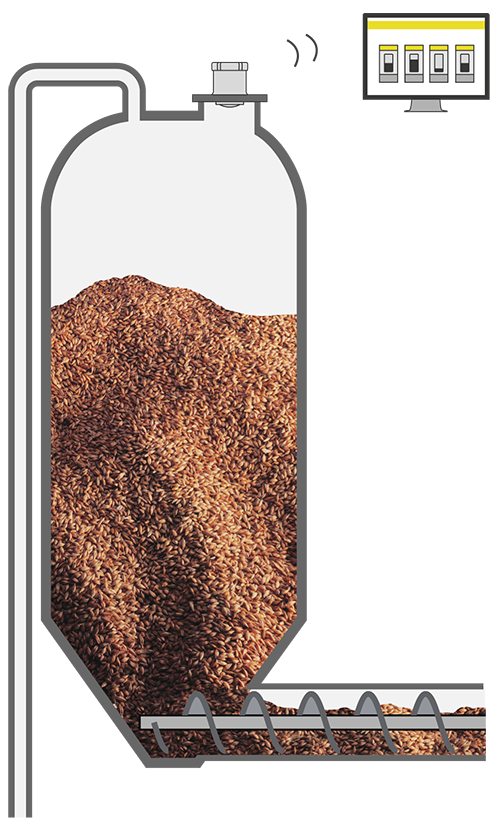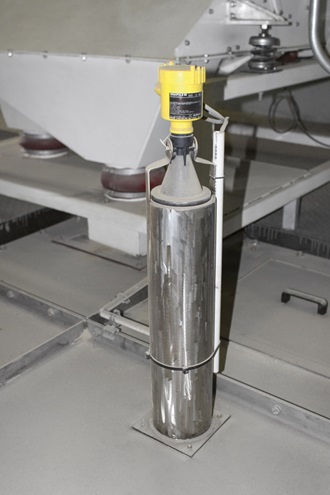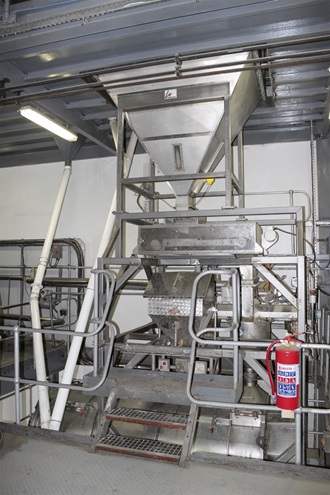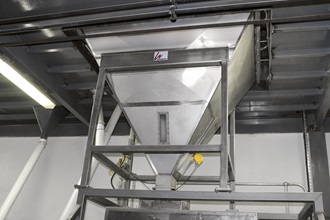VEGAPULS 69 radar sensor measures the level reliably in small dosing vessels
The dog is man’s best friend. Many dog owners spare no expense and want only the very best for their pet. As a result, a wide range of dog food is available ranging from puppy food to senior mixes, as well as products for dogs with sensitive stomachs and allergies. The product range and the variety of recipes has been growing for years.
The South African company, RCL Foods, knows exactly what dogs like to eat. This leading African food producer not only produces various types of pet food, but has also developed and designed its own production equipment. Adding essential oils and fats to the food products has proven to be a very difficult and complex process.
The basic steps of the pet food process include sourcing raw materials, adding essential vitamins and nutrients via a dosing system, grinding to a specific specification and size, and then mixing. In the next step, the pre-processed product is fed pneumatically via a conveyor line to the extrusion unit. Steam, water, and other ingredients are added there to produce many different shapes, sizes, and mixes of animal feed.
Despite the significantly shorter wavelength of VEGAPULS 69, the sensor is very insensitive to deposits.
The problem: Once the product leaves the batch dryer, the food product is supplied with fats and oils. It's this step where engineers installed a container for holding the dried pellets. This feeds a belt weigher, which is used to obtain an accurate flow rate to ensure an even distribution of the fats and oils. It is absolutely necessary for the filling level in this storage container to be reliably measured in order to achieve an unvarying flow. Only then can the belt weigher operate smoothly and stably. The reason for this is the four PID loops that control the addition of fats and oils cannot cope well with highly fluctuating process variables.
At first glance, the measuring point does not appear to be especially problematic. The ambient temperature is moderate, and the food pellets are actually easy to handle. From time to time, light vibration occurs in the system, but that normally does not affect the measurement. The real difficulty only becomes apparent when you take a closer look. The size, composition, and density of the individual pellets vary constantly. What is more, the level itself changes very quickly because the product flows so quickly. That’s why reliable level measurement in the storage container was extremely difficult.
RCL has been working with VEGA for more than a decade and appreciates the excellent service provided by the local subsidiary of the Black Forest company.
Reliable level measurement also in small vessels
Since the product flows quickly, the filling level also changes constantly. Reliable level detection in the storage tank is therefore no easy task.
VEGA proposed a trial run with the VEGAPULS 69 radar level sensor. This radar uses a higher 80 GHz frequency, which considerably extends the spectrum of applications for radar level measurement technology. Its success is due in part to the fact the measuring instrument has a narrow beam angle of only 3° where previous instruments had a beam angle of previously 10°. This allows the measuring beam to glide right past internal fixtures or buildup on the vessel wall. In practice, the significantly tighter focusing of the transmitted signal offers a whole range of advantages. The most important is the actual measuring signal can be better separated from interference signals, allowing even the smallest reflection signals to be detected.
RCL Foods was particularly concerned about the small size of the container - only 2 meters. The effective measuring range inside the vessel was even smaller at 1.5 meters. Smaller vessels are notoriously more difficult to measure level with non-contact instruments because of the blocking distance, or dead band of the sensor. Even though the VEGAPULS 69 has a measuring range of up to 120 meters, it easily handles shorter distances like those in this particular storage container at this South African company.
Good focusing enables measurement with sockets
Related applications
Animal feed silo

Level measurement in animal feed silos
To the applicationProducts
We need your consent
This content is provided by an external provider. If you activate the content, personal data may be processed and cookies set.
Related articles

Measurement of natural oils and fats for pet food production
Read moreExport this article
Download as PDFShare this article
Comments ({{comments.length}})
{{getCommentAuthor(comment, "Anonymous")}} {{comment.timestamp | date : "dd.MM.yyyy HH:mm" }}
{{comment.comment}}








